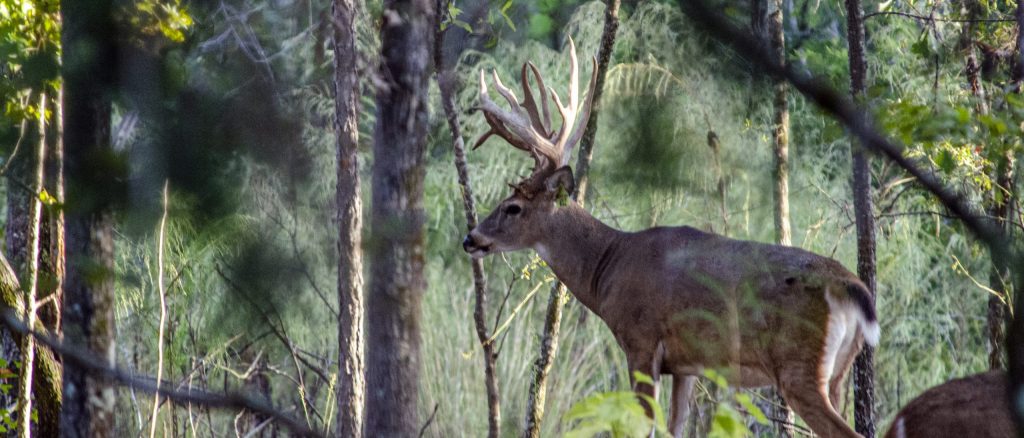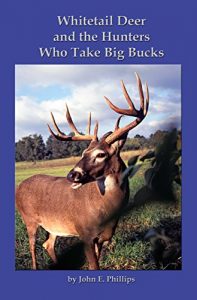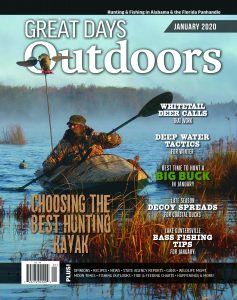Jesse Owen of Tennessee had permission to hunt the 25 acres behind his house and first saw a huge buck with many points on his massive, wide rack in 2016 on his trail camera. “I estimated him to be a 12 point, scoring about 150 inches. I never saw or got photos of him during daylight hours. He was totally nocturnal,” Owen recalled. Owen didn’t know how to take this big buck. But instead of saying, “There’s no way to take this buck legally,” Owen decided he would study all the articles he could about the best hunting times and taking nocturnal bucks .
What One Hunter Learned about Taking Nocturnal Bucks
Owen learned that three ingredients must come together to take a big, nocturnal buck.
“I needed to hunt the buck:
- “During the rut, when an older age class buck would break with his normal routine and start chasing does to breed;
- “When the weather was changing – either from warm to cold or from cold to warm – causing mature bucks to move;
- “By being patient, turning down other, shootable bucks; and
- “By spending time in my stand.”
Once Owen saw that a major weather change would occur one afternoon with a cold front moving in from the northwest, the temperature was supposed to drop dramatically and a light rain with the possibility of snow was due to fall too, he realized that on this day, there were the perfect whitetail conditions to take the trophy buck.
Because of weather forcast, Owen thought that if that “monstrous” buck ever was going to change his habits and appear in the daytime, it should be today.”
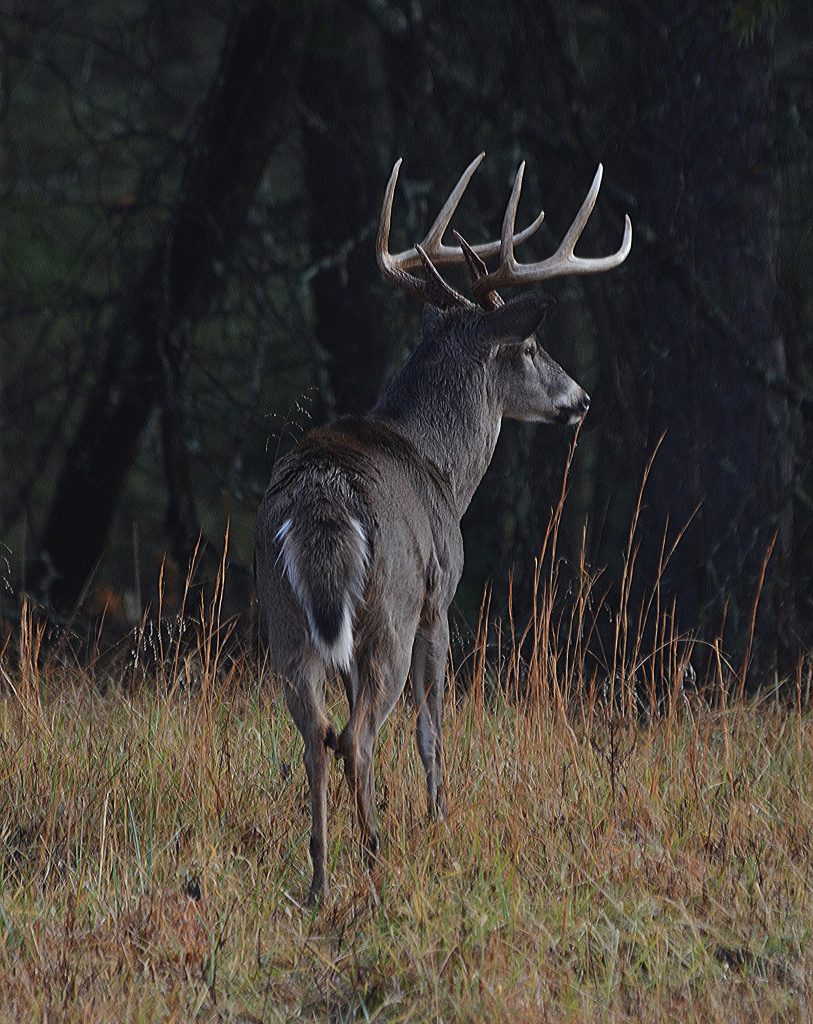
After getting in his blind, Owen looked out its side window and spotted the big buck jumping the fence, about 150 yards away from his blind, coming down a trail.
“I was so amazed at how big this buck’s antlers were that I hesitated. Then that buck looked directly at my ground blind, and I shot this big, usually nocturnal buck,” Owen said.
Many hunters would have hoped to get lucky at some time during the three seasons that Owen hunted and researched this big buck. Instead, Owen chose the very-best day of deer season to hunt that buck when the odds were the greatest that a huge buck like this would show up.
What Factors Impact Your Taking a Big Buck
Twenty years of research, including 35,000 hunter days and statistics from the National Weather Service about the weather conditions on both morning and afternoon hunts, can teach us information about when deer move. Dr. Bob Sheppard of Tuscaloosa, Alabama, with the help of the hunters and the staff at Bent Creek Lodge in Jachin, Ala., has gathered dramatic information that will change many of our beliefs about when deer move, and what’s the best time to hunt deer.
According to Dr. Sheppard his research from hunters on deer sightings and deer harvest over a 20-year period with hunters hunting mornings and afternoons was merged with the National Weather Service data on weather conditions for each day these hunters hunted. Once he had the data, he began to look at the weather conditions that impacted deer behavior; the they move, can be seen and can be harvested.
“We wanted to know what kind of weather conditions optimized the likelihood of big deer getting-up out of their beds and walking around, so hunters could take them during daylight hours. We were surprised by some of the data, and what we learned,” Sheppard noted.
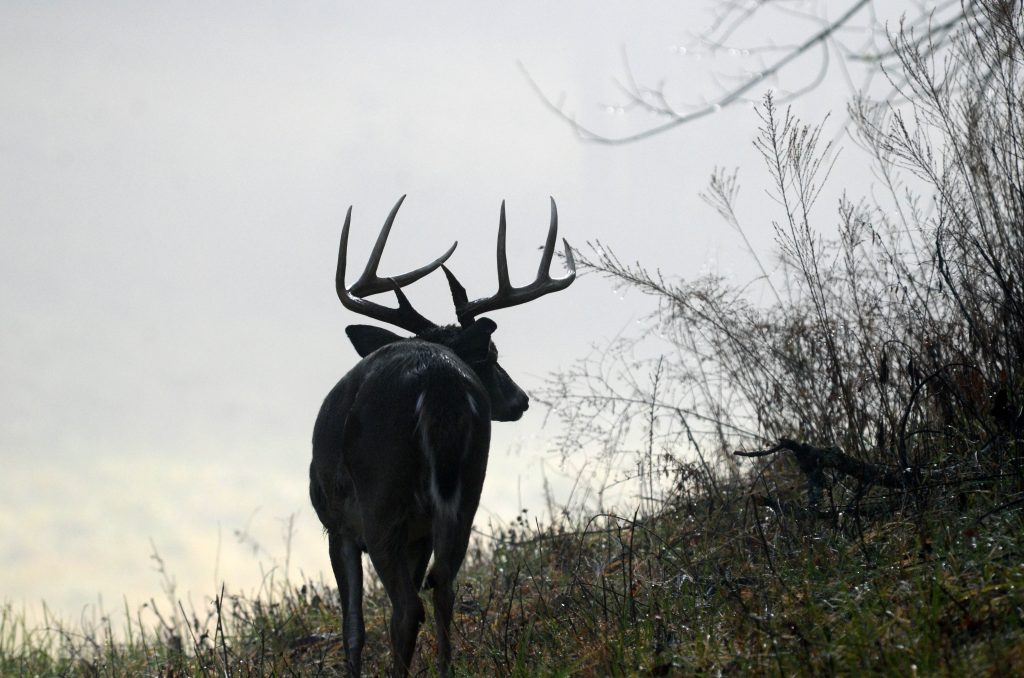
Shepperd concluded that:
* “The most-important factor that increases the likelihood of deer moving in daylight hours is temperature. Basically, the colder the weather is, the better your odds will be for seeing deer.
* “The amount of cloud cover or the lack of cloud cover is the second most-important factor impacting deer movement. Rainy weather isn’t particularly good, although some hunters swear that hunting deer in rain is better. Cloudy skies are somewhat better for spotting deer movement. A clear sky is the best day to hunt, particularly bright, clear, cold days.
* “The third factor impacting deer movement was wind velocity. I initially thought a calm day with no wind or wind speeds of 12-15 miles per hour wouldn’t cause deer movement. I assumed really-strong winds with possible wind speeds of 30 to 40 mph wouldn’t be good days to hunt. But statistics showed that the harder and faster the wind blew, the more deer sightings and deer kills we recorded.”
What’s the Ideal Day for Hunting Deer
An ideal day for hunting deer will be a cold day with clear skies and high wind velocities. You’ll need a close shot, so you won’t experience arrow or bullet drift in a hard, blowing wind.
According to Dr. Sheppard, on:
→“Cold days, deer need more food than on other days and may stay warmer by walking.
→“Clear, windy days, deer can’t hear sounds in the woods as well as on still, quiet days.
→“Clear days with plenty of sunshine, deer spot approaching predators better than on cloudy, overcast or rainy days.”
But as Dr. Sheppard emphasizes, “These are just my opinions.”
How Moon Phase Affects Deer Movement
Moon phase can impact your deer hunting, but probably not in the way you think. Many hunters believe that moon phase is the critical ingredient determining when deer move and have believed that on the day before a full moon, the day of a full moon and the day after a full moon that deer don’t move as much. We’ve always thought that on bright nights deer feed, and on dark nights deer don’t feed.
What Dr. Robert Sheppard has learned may change your opinion.
“Bent Creek Lodge puts out 25 hunters for the morning hunt and 25 hunters for the afternoon hunt, every day during Alabama’s deer season. For 20 years, when the hunters returned from the woods, they gave us the information they had gathered, the number of bucks and does seen, and the number of deer taken – both bucks and does,” Sheppard said.
He continued, “Once we gathered that information and overlaid that with the information from the National Weather Service, recording moon phase, wind direction, temperature and many-other weather-related factors, we matched-up the data these hunters brought in with the weather information we’d received. Then, we looked at each weather indicator one at a time to see how the moon phase, barometric pressure, wind direction, wind speed and sky conditions (rainy, cloudy, overcast and many-other variables) impacted deer movement.”

The first two years of the study, Sheppard found information supporting what he thought it would. The day before the full moon, the day after the full moon and the next day weren’t productive days to hunt with hunters not seeing or taking many deer then.
“Then during the next 2 years, the results were exactly the opposite,” Sheppard explained. “The day before the full moon, the day after the full moon and the next day seemed to be some of the best days you could hunt deer. So, we had four years’ worth of conflicting data as to when deer moved according to the moon phase. I went back and did a multivariable analysis.”
Sheppard continued,” I learned that the moon phase was a marker, but not the actual cause and effect that made the deer move. Temperature had a greater bearing on deer sightings than moon phase did. In other words, if a cold front hit, and there was a bright moon, then the deer would move. But a bright moon phase and warm weather meant hunters wouldn’t see many deer.”
What Other Factors Increase Yours Odd for Taking a Trophy Buck – Using the First Strike Approach and Being Conscious of Noise
Dr. Sheppard is a total believer in the first-strike approach for trophy bucks. He’ll only hunt from a stand site once during deer season to keep deer from patterning him.
Sheppard explained that earlier in my deer-hunting career, he spent hours and days attempting to pattern a trophy buck. Then, he’d go to his stand and try to take that buck.
“I might see him on the first day I hunted and not be able to get a shot, or for some unknown reason the deer just wouldn’t show-up. So, I realized I had to develop a different hunting strategy,” Sheppard said.
Sheppard is convinced that deer pattern hunters with their noses, determining where hunters have come into the woods, where they’ve last been on the ground, and which direction they’ve walked to leave the woods.
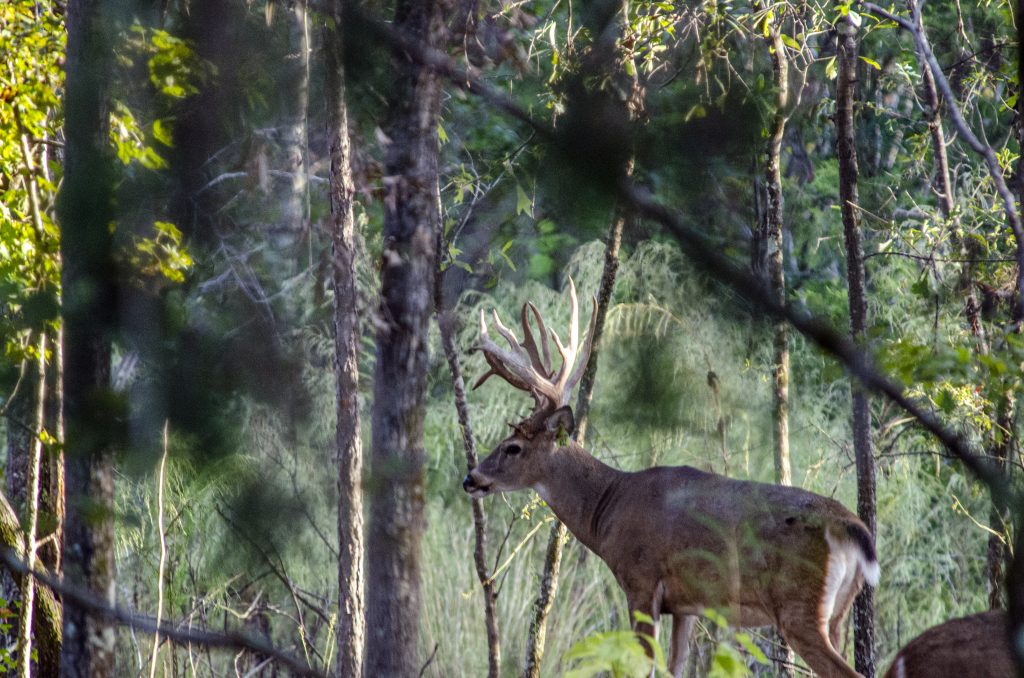
“When we walk to our tree stand sites and set-up our tree stands, we leave human odor at the bases of those trees,” Sheppard pointed out. “As a hunter climbs a tree, some of the bark and the dust on the side of the tree falls to the ground. Perhaps the wind carries some of that bark and dust with our human odor in it out past the tree. That night, when deer come through the area, the deer will smell where you’ve been and will avoid that particular spot.
“During the daytime, they may not change their routes and still may go to the same places, but usually an older-age-class buck will travel 100 – 200 yards from where he’s smelled human odor. I avoid the places that I’ve hunted that season and won’t return there until the next season.”
Sheppard thinks deer put more emphasis on where you’ve been, than they do on where you are now.
“I’m convinced that deer know that hunters are creatures of habit. All of us like to hunt places where we’ve hunted before. A buck realizes that if he avoids a spot where he’s smelled human odor, his chances of survival are much greater,” Sheppard concluded.
Many hunters don’t believe that the noise the hunter makes going to or from his or her stand or while in the stand is that important, but Sheppard has found that it is. So much research is being conducted by wildlife scientists and avid students of deer hunting that by keeping an open mind to learn all we can about the big deer we want to take, we’ll increase our odds to harvest more and bigger deer.
For more information about Dr. Sheppard’s research and hunting tactics, go to his webpage at www.bobsheppard.com.
To learn more about big-deer hunting strategies, check out John E. Phillips’ book “Whitetail Deer and the Hunters Who Take Big Bucks,” available in Kindle, print and Audible versions.
Sidebar: Selecting the Best Stand Site for Taking Big Bucks
Since you can’t bag a buck if you don’t see the animal, you must know how to choose the most-productive stand sites.
Stadium Seats – Use the same procedure you do to find your seat at a football game. Many hunting guides recommend you use an aerial photo. On an aerial photo, you can look at how the ground lies, since each piece of property is different, and you’ll have to hunt it differently. You can identify the road systems to enter and leave as well as the natural barriers, property lines, bodies of water, large fields and funnels.
You even can distinguish between hardwoods which appear as small, round, blob-looking features (the tops of trees) and pine trees with a smoother texture. Topographical maps will enable you to pinpoint land changes and identify ridges, valleys and terrain breaks. Go to www.mytopo.com to have maps made of specific sites you want to hunt.
Public-Land Stands – If you’re hunting public lands, you must always think that someone else may be at your favorite stand site. A few years ago while hunting public lands, I discovered an acorn-producing white oak tree, surrounded by a huge number of droppings, tracks and acorn hulls. Two trails led there.
I thought the best spot to hunt would be within 50 yards of the white oak tree to watch bucks coming down both trails and have the best opportunity to see the most deer. I assumed the second-best stand site would be 50 – 100 yards away from the tree, down the most well-defined trail. My last choice would be to take a stand on the more-dim trail that apparently had not been used very much.
When I rethought my original stand-site priorities and considered what the other hunters in the area probably would do, I realized that Stand Site I (the oak tree) was an obvious feeding hot spot and would be visited by other hunters. At Stand Site II, I figured the experienced hunter would take this well-defined trail leading to the white oak tree, thinking a novice would set-up close to the feeding site.

Hunting from Stand Site III appealed to me, because I knew that older age-class bucks, often the biggest bucks on the property, rarely used the same trails as does and younger age-class bucks. An older buck’s trail wouldn’t be as well-defined. I took a nice buck at Stand Site III for these reasons.
Green Field Stands – The most-obvious green field stand site is on or near a trail that comes from the woods to a green field, with the best time to hunt there in the late afternoon when deer are moving to the green field to feed. The second best green field stand site will be 50 – 100 yards down that trail. But instead, go past this point further down the trail to where you pinpoint two or three other trails intersecting the main trail leading to the green field.
These trail heads are often 200 – 400 yards away from the green field where several trails come together on the main trail leading to the green field and will be the most productive. Place your tree stand near that intersection.
Escape Trail Stands – If you hunt high-pressure areas, one of the most consistent stand sites will be escape trails, where a buck goes after being spooked by other hunters. Escape trails usually will lead out of or into thick cover and are often near or close to open woodlots, green fields or agricultural crops. Look for the trail coming away from whatever barrier the buck probably has put between him and the hunter, and set up there.
Water Stands – You can “buddy-hunt” and use a small boat, a canoe, kayak or you can wear waders to reach a tree stand site over or in water in a river-bottom drainage. That way you leave no scent in the area you plan to hunt, can watch the water’s edge which is often a natural deer-migration route and you may surprise any the deer there, since they don’t expect to see hunters in trees over water or wading in the water.
It also means that other hunters may drive deer to you if they’re coming by land. An added benefit is that you can load any deer you bag into the canoe and easily transport it out to your vehicle. I once hunted a water site on my hunting club that produced six nice-sized bucks for me out of eight years.
This This article first appeared in the January 2020 print issue of Great Days Outdoors Magazine. For more great hunting and fishing content for the deep South, subscribe to Great Days Outdoors print and digital editions or click the image to download this issue.

